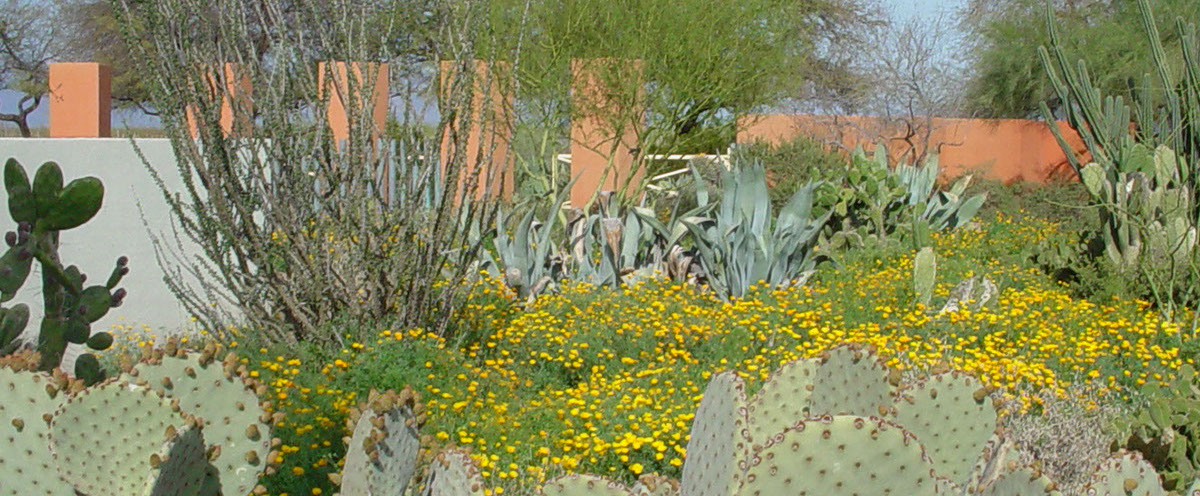


Nitrogen Fixation and Desert Trees
Commercial agriculture has exploited the unique relationship between legume species of plants and the soil bacteria Rhizobia. The bacteria colonize the roots of legumes and in exchange for taking a few nutrients and fluids from the plant “fix nitrogen.” Rhizobia have the unique ability to convert gaseous nitrogen into the nitrate forms used by plants. This symbiotic relationship (a biological relationship where both organisms give something up in return for some benefit) is rare in the plant world and few species are known to be capable of it. It is a complex and dynamic biological relationship even for plant species easily colonized by the bacteria.
With commercial legume crops like soybeans and alfalfa, especially when grown under “dry land” (non-irrigated) conditions, the ability to fix nitrogen is essential to plant growth and marketable yields. Commercial seeds for these crops are typically coated with a preparation containing the appropriate strain of Rhizobium for the particular crop plant. Even these precautions do not always guarantee success. Soil conditions also play a role. Eastern and mid-western farmers apply tons of lime to the soil to raise the soil pH to make it more conducive to bacteria growth. Soil moisture, competition from other soil microbes and the general availability of nitrogen in the soil will influence colonization and nitrogen fixation.
That fact that many desert tree and shrub species are members of the legume family has led some to speculate that nitrogen fixation may occur in natural stands of desert plants and that these relationships could be duplicated in the landscape. It is possible that some level of nitrogen fixation occurs in mesquites but it is highly unlikely that it is significant or important except for those trees growing in extremely nutrient depleted soils in natural or near natural settings. The presence of sufficient soil nitrogen will suppress the formation of Rhizobium nodules on roots (where gaseous nitrogen is fixed to nitrate nitrogen) and reduce or eliminate the entire process. Any level of typical nitrogen fertilization in the landscape would likely suppress this process.
Much like mycorrhizae, only highly specific strains of Rhizobia can colonize the roots of a given legume to set the process in motion. There is no indication that this occurs in desert or urban/desert soils. The clear, potential benefit of these microbes makes them attractive to commercial and professional horticulturalists. In the absence of any research or field data suggesting that these relationships do exist in desert trees makes any suggestions that they do highly speculative and suspect.
Mycorrhizal colonization of desert tree roots definitely occur according Dr. Jean Stutz at ASU. Its importance in the growth and development of desert trees growing in landscape settings is mostly unknown. In recent years commercial formulations of mycorrhizal fungi have been sold as soil amendments to promote plant growth. While there is extensive research literature about the successful use of mycorrhizae under certain controlled experimental conditions, large-scale field tests have been largely inconclusive. Several factors may contribute to the lack of success in such field tests: 1) the fungi grow very slowly and the experiments may not have been of sufficient duration to demonstrate the effect, 2) soils were nutrient rich and the potential beneficial effect was not observed in such conditions, 3) fungi did not become established on the roots following inoculation and 4) fungi were not able to establish a symbiotic relationship with the plant roots or were not an appropriate match for the tree specie tested. Many of these same factors explain the absence of significant nitrogen fixation in desert trees and shrubs.
It will always be tempting, considering our difficult, nutrient deficient soils, to suggest there is some magic bullet, especially one that is “organic” in form, that will set our soils right and promote vigorous growth for our trees and shrubs. Until we know more, we should speak in general terms about these “known” biological processes and be wary of making promises that “Mother Nature” has yet to deliver.

© Copyright 2000-2020 Arid Zone Trees